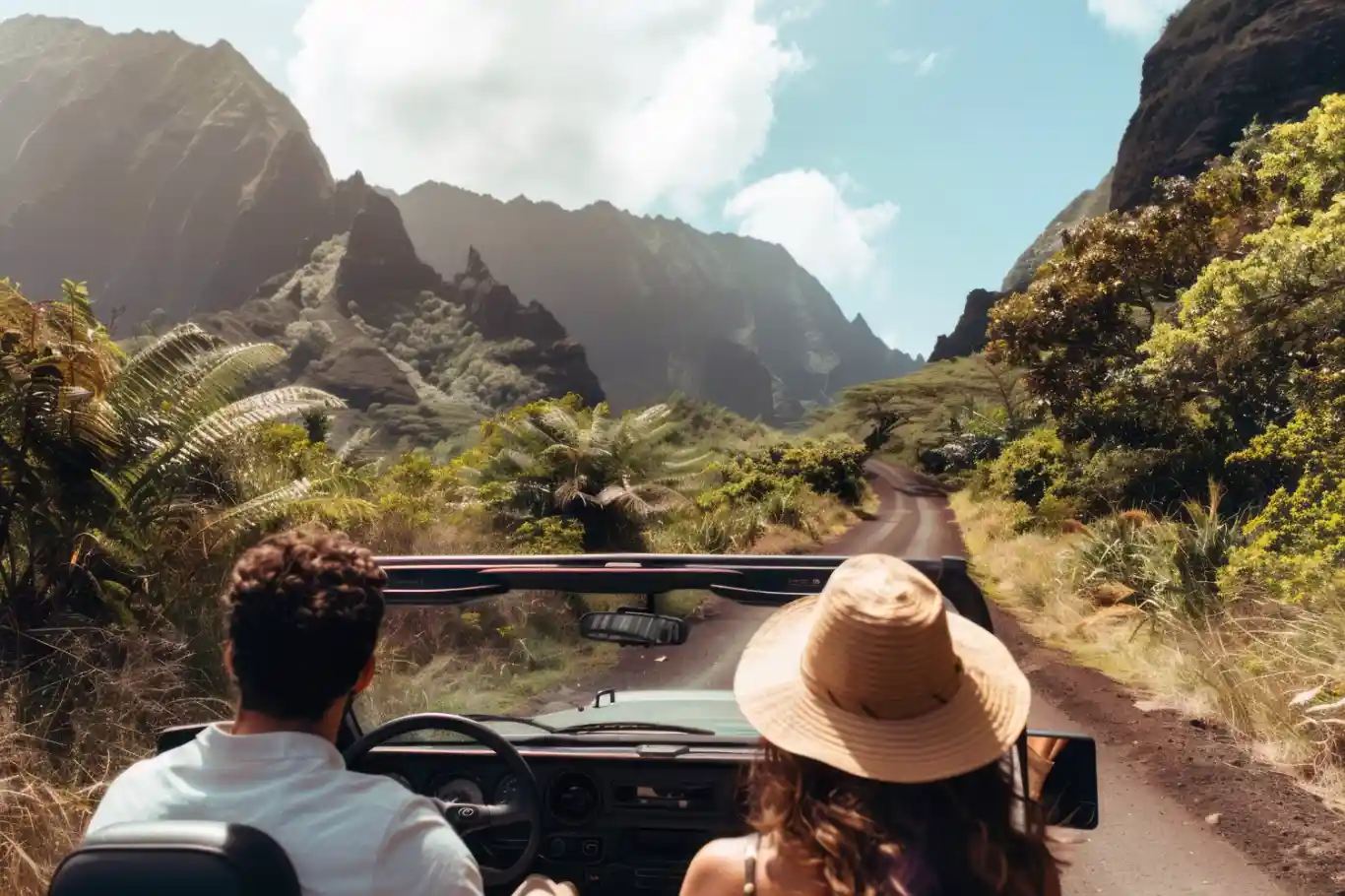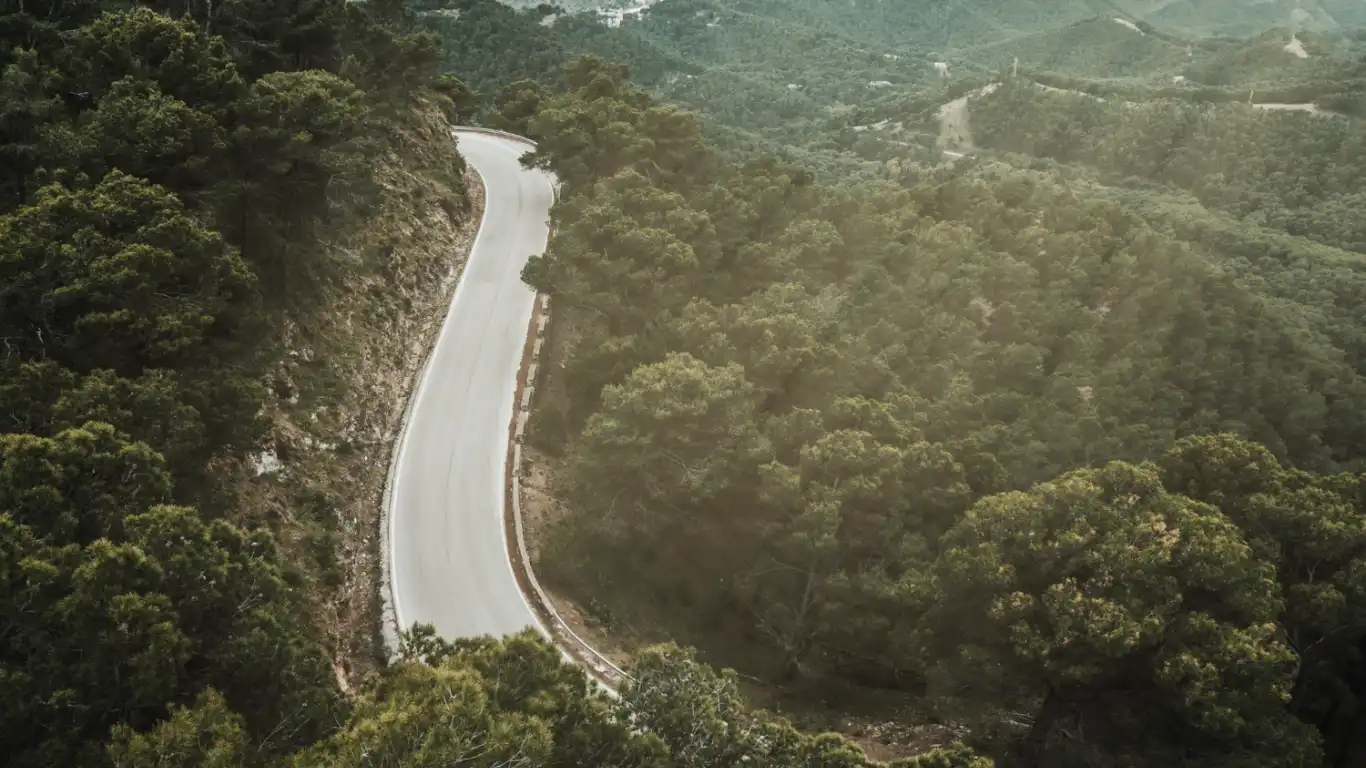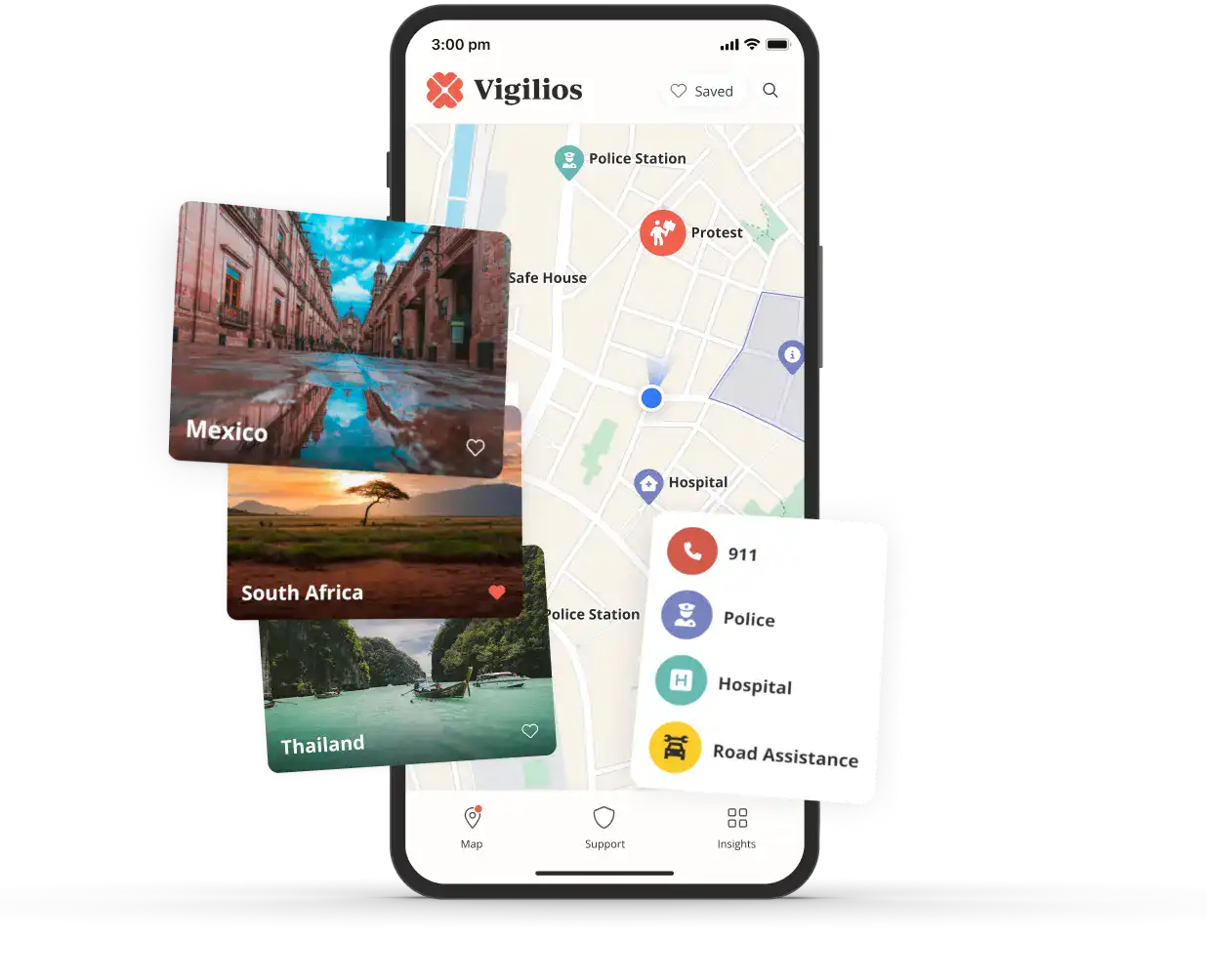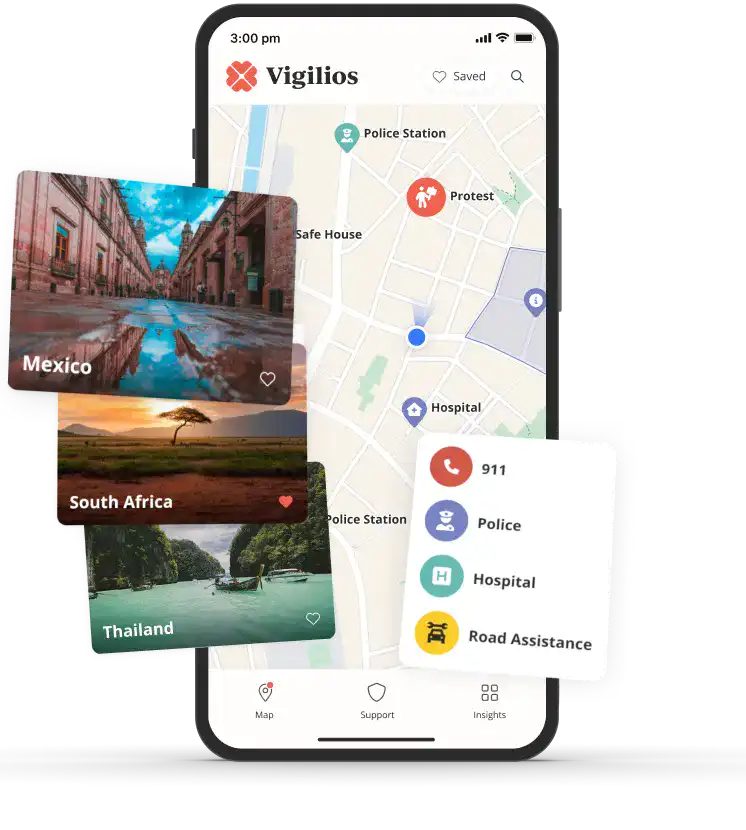Driving in Costa Rica: A Practical Guide for Safe and Scenic Travel

Table Of Contents
In Costa Rica, you can experience unique road trip freedom but must be ready for a mix of road conditions and driving challenges, especially during rainy seasons and holidays.
Costa Rica's road traffic mortality rate, 15.5 deaths per 100,000 population, reflects significant road safety challenges that travelers should be aware of while driving.
Renting a car involves researching insurance policies, avoiding scams, and choosing a vehicle suited for varied terrains, with larger, four-wheel drives recommended.
Understand and respect local driving etiquette and laws, prepare for interactions with traffic police, and always be ready for unexpected situations like accidents or breakdowns.
Thinking about driving in Costa Rica? Road conditions can be as varied as the landscapes, and knowing what to expect can turn challenges into triumphs. In this guide, we'll dive into the must-know aspects of Costa Rican roads, from essential car insurance to choosing the right rental vehicle, and provide you with key pointers to ensure a smooth ride.
Key Takeaways
Exploring Costa Rica by Car: Is It the Right Choice for You?

Embracing the “Pura Vida” lifestyle on a Costa Rican road trip is a unique experience, offering the freedom to explore at your own pace. The ability to make frequent stops, whether to admire a breathtaking view or soothe a fussy baby, is a significant advantage of driving in Costa Rica. However, it’s essential to balance this against potential challenges such as unpredictable road conditions and the stress of navigating unfamiliar territory.
You see, not all roads in Costa Rica are created equal. Some are well-paved highways, while others are dirt roads ridden with potholes. The rainy season and major holidays may bring additional challenges like road closures due to construction or natural events.
So, if you’re considering a Costa Rican road trip, it’s crucial to decide if you’re up for the adventure that comes with Costa Rica driving.
Assessing Road Safety in Costa Rica
Driving in Costa Rica can be a mixed bag. In urban areas like San Jose, the capital city, you’ll encounter heavy traffic during rush hour, and roundabouts that can turn into free-for-alls. With drivers often not yielding or signaling, you’ll need to embrace defensive driving and keep an eye out for pedestrians and bicyclists. To make your experience smoother, consider these costa rica driving tips.
On the other hand, outside the capital, traffic is generally lighter. However, single-lane highways can get crowded, and you’ll encounter a mix of assertive and laid-back attitudes from other drivers. Also, be prepared for potential infrastructure issues and wildlife on the roads. The good news is, the Costa Rican government has been actively working to improve road signage and the overall condition of the roads and highways.
When comparing road traffic mortality rates among Central American countries, Costa Rica stands at an estimated 15.5 deaths per 100,000 population, as reported by the WHO. This places it in the mid-range for the region, with countries like Honduras and El Salvador experiencing higher rates at 18.5 and 21.5, respectively, while Panama enjoys a lower rate of 7.3. Despite active government efforts to enhance road safety, the figures underscore that road safety remains a significant concern, emphasizing the importance of caution and adherence to road safety guidelines for travelers driving in Costa Rica.
Comparing Transportation Options
Of course, rental cars aren’t the only way to get around in Costa Rica. The public bus system is another option, particularly for travel between major towns. However, buses tend to be slower and offer limited flexibility and frequency.
If you’re looking for a balance between cost and convenience, consider shuttle van transfers. These provide a more direct alternative to public buses. And if you do opt for the bus, apps like Passer, designed for the Tracopa bus line, can help with route details and ticket reservations.
Essential Tips for Renting a Car in Costa Rica

If you’ve decided to take the wheel for your Costa Rica road trip, there are some essential tips to keep in mind. Start by researching both local and international car rental companies like Enterprise, Sixt, and Adobe Rent-a-Car. Also, consider making reservations in advance to avoid inconvenience upon arrival.
While you’re at it, be on guard for potential scams. Some rental car companies may try to upgrade you to a more expensive car without your consent or sell you costly car rental insurance. It’s also worth noting that there may be additional fees for certain rental options like one-way car rentals, and for drivers under 25 years old.
Understanding Insurance Policies
Understanding insurance policies is a crucial part of the car rental process in Costa Rica. By law, rental cars must be insured with either SLI (Supplemental Liability Insurance) or TPL (Third Party Liability), and a government-required coverage called Marchamo.
In addition to these required coverages, a basic collision damage waiver (CDW) is typically included with rental cars. And while rental agencies offer their own versions of the ‘mandatory’ insurance, be wary of third-party insurance scams. If damage occurs and your credit card’s insurance coverage is declined, you’ll be responsible for the cost.
Selecting the Perfect Vehicle for Your Trip
Choosing the right vehicle for your itinerary is a vital aspect of your Costa Rica road trip. The country’s varied terrain can influence the type of car best suited for the trip, with larger vehicles with good clearance, preferably a four-wheel drive SUV, recommended for certain destinations.
Bear in mind that the specific car you reserve may not be available upon arrival. Also, if you’re planning to drop off your rented vehicle in a different city than where you picked it up, you should understand the one-way rental policies as additional fees can apply.
Mastering Costa Rican Roads: A Primer

Ready for an adventure? Costa Rican roads are as varied as the country’s stunning landscapes. From well-maintained highways to challenging dirt roads, and even roads that are more pothole than road, Costa Rica has it all.
This variety means that, particularly outside of cities, you’ll want to use a larger vehicle with good clearance, and preferably a four-wheel drive. While major cities and the Central Valley often have better road conditions with features like painted lines and guard rails, rural areas may lack such safety features. Plus, highways can unexpectedly transition to single lanes.
Navigating Through the Central Valley and Beyond
Driving through Central America, particularly Costa Rica’s Central Valley and beyond, you’ll need to exercise caution. Roads in larger cities like San Jose and downtown San Jose are generally paved, but often lack painted lines, and traffic lights and sidewalks are not as common outside the capital. It’s essential to be familiar with Costa Rica road signs to ensure a Costa Rica safe journey. Using google maps can be helpful in navigating these areas.
Moreover, destinations can be deceptively farther apart than anticipated due to mountainous terrain and winding roads, making journeys longer than expected. And while driving short distances at night is generally safe, it’s not recommended to drive long routes after dark, regardless of the season. Especially on routes like Route 2 between San Jose and San Isidro de El General; Route 32 between San Jose and Limon; and Route 27 connecting San Jose to Puntarenas and Jaco, extra caution is needed for washouts and landslides during the rainy season.
Seasonal Variations: Dry vs. Rainy Season
Just as seasons change, so do the road conditions in Costa Rica. During the rainy season, roads can significantly worsen due to erosion and disrepair, making many roads impassable. This necessitates the use of four-wheel drive for traversing potentially treacherous terrain.
Travelers should also be alert for washouts and landslides, common occurrences that complicate travel during the rainy season. And with poor lighting and reduced visibility, driving at night becomes particularly dangerous during the rainy season. It’s generally advised to avoid long routes under such conditions.
Seatbelts are mandatory for all passengers.
Children under 12 years old need to be in an appropriate car or booster seat.
Although pedestrians do not have the right of way in urban areas of Costa Rica, you should always be cautious of them, as well as bikers.
Urban areas: Typically, speed limits range between 25 to 40 km/h (15 to 25 mph).
Rural areas: Speed limits are usually around 60 km/h (37 mph).
Highways: On major highways, the speed limit can go up to 80 to 100 km/h (50 to 62 mph).
Driving Etiquette and Local Laws
As you journey through Costa Rica, it’s essential to respect local driving laws and etiquette. The first rule of the road? Always have a valid driver’s license from your home country, along with an international driver’s license and your passport or a copy of the photo page and entry stamp.
While locals may not always adhere to speed limits, it’s crucial for tourists to follow them for safety and compliance. Here are some important rules to keep in mind when driving in Costa Rica:
Speed Limits in Costa Rica
In Costa Rica, speed limits vary depending on the type of road and location:
It's important to note that speed limits are often strictly enforced, and fines for exceeding them can be significant. Always pay attention to road signs, as speed limits can vary in different areas and under different conditions.
Encountering Unique Roadway Features
Costa Rica’s roads offer some unique features that drivers should be aware of. One of these is one-lane bridges. The general rule for navigating these is that the vehicle which gets to the bridge first has the right of way.
Another unique feature you might encounter is river crossings. When facing a river crossing, engage 4X4 mode if available, proceed slowly, and be vigilant of the route. However, if a crossing appears too hazardous, it’s advised to not cross and instead return to the main road.
Lastly, be cautious of sudden road endings and unmarked speed bumps, especially on urban freeways.
Interacting with Traffic Police
Interacting with traffic police in Costa Rica is likely to be a part of your driving experience. If you’re pulled over, remain calm and prepare to present your license, passport, and car rental documents.
Also, be prepared to show your driver’s license at police checkpoints. It’s important to note that failing to pay traffic fines can result in being stopped at the airport or even being detained. Plus, fines for traffic violations in Costa Rica can be costly, so it’s best to obey all traffic laws to avoid these issues.
Safely navigate to a secure and well-lit area such as a parking lot or gas station.
Activate your hazard lights.
Use a reflective triangle to alert other drivers.
Handling Unexpected Situations
Despite all preparations, unexpected situations can arise while on a road trip in Costa Rica. In case of an emergency, dial 911 for immediate assistance. If you receive a traffic ticket, inform the car rental company right away, as payments for fines are generally processed through them.
Also, remember that the emergency roadside assistance of your rental car company can be found on the rental agreement. It’s best to have this number handy for incidents such as breakdowns or mechanical issues.
Dealing with Accidents and Breakdowns
Accidents and breakdowns can happen, even to the most careful drivers. If an accident occurs, it’s important to call 911 for emergency assistance and to notify the rental car company without delay. Remember, it’s a legal requirement not to move the vehicle after an accident in Costa Rica.
For those venturing off-road, roadside assistance is highly recommended. It provides cost-effective help in case of emergencies, giving you peace of mind during your adventurous escapades.
Flat Tire Fixes and Gas Station Know-How
Flat tires are a common issue for drivers everywhere, and Costa Rica is no exception. If you experience a flat tire, follow these steps:
At gas stations, ensure that attendants reset the meter before fueling begins. This helps avoid potential discrepancies and ensures you receive full service for your payment.
Zip-lining in the Monteverde Cloud Forest
Mountain biking around Rincón de la Vieja National Park
Soaking in the warm waters heated by Arenal Volcano at Ecotermales Fortuna
Making the Most of Your Costa Rican Road Trip

A Costa Rican road trip is the ultimate adventure for those who have visited Costa Rica, offering unparalleled freedom to explore the country’s vast natural beauty at your own pace. With a rental car, every waterfall, volcano, beach, and national park is within your reach. Plus, you can indulge in unique outdoor activities like:
Moreover, a rental car offers practical benefits like storing belongings in the trunk. This allows you to explore small towns and trails with just a backpack, rather than having to carry all your luggage. So, get ready to embrace the “Pura Vida” lifestyle and make the most of your Costa Rican road trip.
Planning Your Route: Scenic Drives and National Parks

Planning your driving route is an important step in maximizing your Costa Rican road trip. Consider incorporating scenic drives and visits to diverse national parks. For instance, the drive from Naranjo to Arenal Volcano reveals lush forest scenery, while the route 142 from Arenal Volcano to Guanacaste offers views of landmarks like Los Heroes train sign and the Ceiba Tree.
In addition, Costa Rica’s national parks offer a wealth of natural beauty and remarkable landscapes. From the raw beaches and rainforest trails of Corcovado National Park to the compact rainforests and pristine beaches of Manuel Antonio National Park, there’s something for every nature lover. So, immerse yourself in the natural splendor of Costa Rica through its scenic drives and remarkable national parks.
Summary
Embarking on a Costa Rican road trip is an adventure full of stunning landscapes, unique experiences, and a sense of freedom that can’t be matched. By understanding the challenges and rewards of driving in Costa Rica, adhering to local laws and etiquette, and preparing for unexpected situations, you can make the most of your journey. So, buckle up, plan your route, and get ready to discover the “Pura Vida” of Costa Rica on the open road.
Frequently Asked Questions

Do I need an international driver's license to drive in Costa Rica?
Nope, you don't need an international driver's license to drive in Costa Rica. Just make sure you have a valid driver's license from your home country.
What is the minimum age for renting a car in Costa Rica?
You usually need to be between 21 to 25 years old to rent a car in Costa Rica, but this can vary by rental company.
What should I do in case of an accident in Costa Rica?
If you're in an accident in Costa Rica, call 911 and your rental car company right away. It's important not to move the vehicle after the accident.
How should I handle a flat tire in Costa Rica?
If you get a flat tire in Costa Rica, find a safe spot, turn on your hazard lights, use a reflective triangle, and change the tire or call for roadside assistance to ensure your safety.





